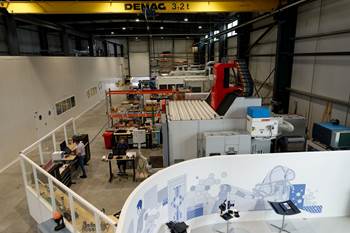Search Results
Showing 11 – 20 of 19 results
The advantages of building aircraft structures with composites, compared to metal, include light weight, high specific strength, superior fatigue properties, damage tolerance and the absence of corrosion.
Composite elements of the Advanced Low Pressure system (ALPS), including fan blades, a fan case and annulus fillers, were tested together on a donor engine.
FlyZero project posits 279-pax midsize jetliner; will publish technology roadmaps for wings, H2 tanks and cryo fuel systems in early 2022.
Increased commitment expands Rolls-Royce’s test facilities in the Purdue Aerospace District to develop high-altitude and hybrid-electric engines, advances Purdue’s economic development.
Rolls-Royce cites Boeing’s proposed timeline as reason for withdrawing itself from the race to be chosen as engine supplier for the unconfirmed NMA.
Co-located R&D and production advance OOA thermosets, thermoplastics, welding, recycling and digital technologies for faster processing and certification of lighter, more sustainable composites.
New tests, analysis enable databases, models, design guidelines and methodologies, combining materials science with production processes to predict and optimize part performance at temperatures above Tg (≈150-180°C) for wing and engine structures.
Proven in fan blade/case applications, carbon fiber-reinforced polymers migrate to previously unanticipated destinations nearer the engine “hot zone.”
As pressure for commercial aircraft fuel efficiency continues to mount, ceramic matrix composites evolve as they battle metals for application in the engine hot-zone and elsewhere.







